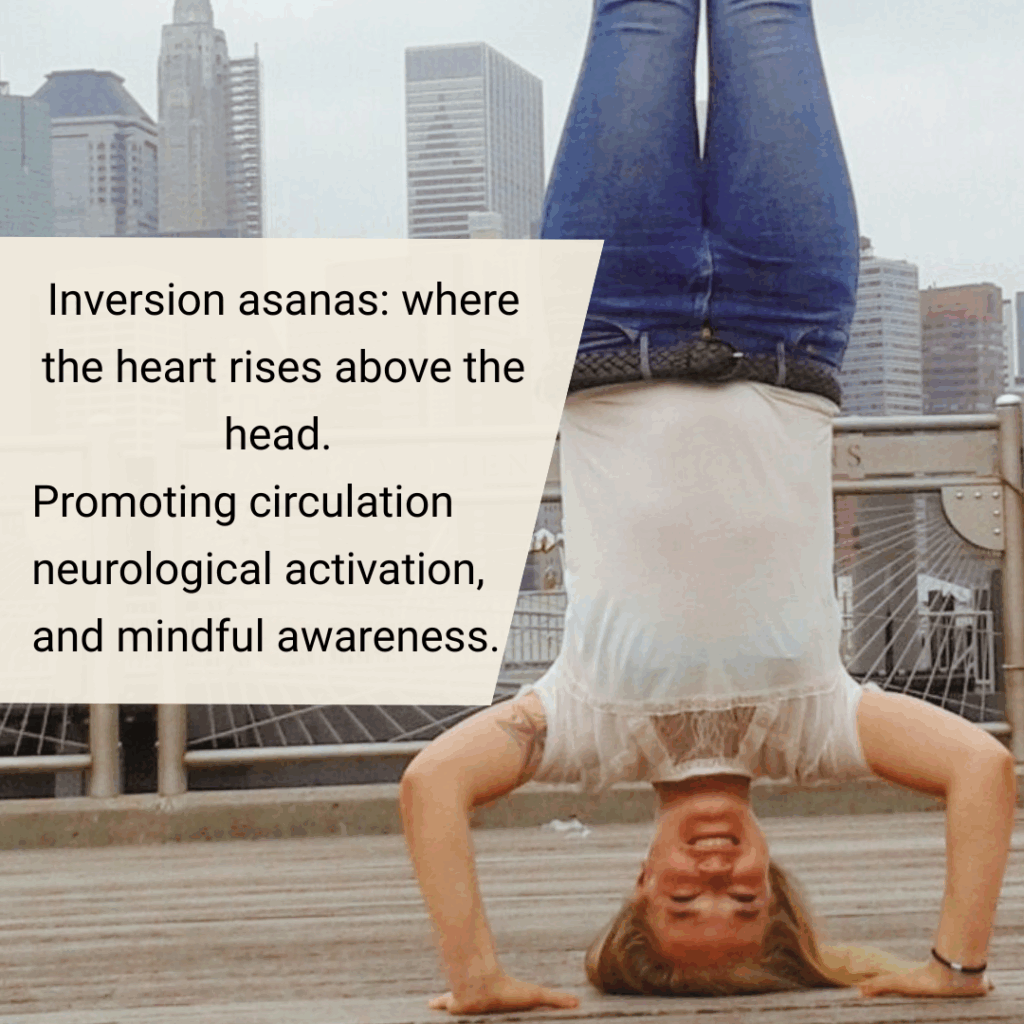In yoga, an inversion is any posture where your heart is positioned higher than your head. While often associated with advanced poses like Handstand (Adho Mukha Vrksasana) or Forearm Stand (Pincha Mayurasana), inversions also include deeply restorative shapes like Child’s Pose (Balasana) or Legs-Up-the-Wall (Viparita Karani). The essence lies not in complexity, but in a conscious shift of direction — in body, breath, and awareness.
As children, turning upside down comes naturally—playful, spontaneous, instinctive. Hanging from monkey bars, tumbling in the grass, we experienced pure joy and fresh perspectives. As we grow older, life becomes more structured and rigid, and we forget the value of flipping things—both literally and metaphorically—on their heads.

Inversions reconnect us with a lost sense of wonder, challenging our patterns and inviting us to see life from new angles.
Important Foundations to Keep in Mind:
- Prepare the body: Always warm up the shoulders, spine, and core before practicing inversions.
- Go slow: Inversions demand patience and gradual progression. Build stability and awareness first.
- Strength before complexity: Develop strength in your arms, shoulders, neck, and core. Begin with supported postures like Shoulder Stand on a blanket. Only attempt Headstand when you’ve built the strength and control necessary.
- Know when to pause: Avoid inversions if you have certain health conditions (e.g., high blood pressure, heart or neck issues), or during menstruation or pregnancy. Listen to your body’s wisdom.
Avoid inversions if you:
- Have high blood pressure – to avoid pressure on the cardiovascular system
- Have heart problems – to prevent added stress on the heart
- Have neck injuries – to protect vulnerable areas from pressure or injury
- Are pregnant – to ensure safety for both mother and baby
- Are menstruating – as inversions may disrupt flow and cause discomfort

Benefits of Inversions:
- Shift your mind – Inversions sharpen focus and pull awareness inward, creating space for reflection and clarity.
- Boost circulation – Reversing gravity stimulates blood flow, especially to the brain, which can aid mental clarity.
- Release and renew – These poses help release muscular tension, calm the nervous system, and regulate energy.
- Connect inward – With heart above head, your energy is drawn inward, encouraging a deeper connection to both the earth and your emotional center.
Turn with care — let your heart rise above. In every inversion, find stillness in motion, trust in the unknown, and strength in surrender. The world may turn upside down, but your center remains.
Take care, make fair — for body, mind, and everywhere.
Enjoy your Yoga practice,
Andrea Stern
